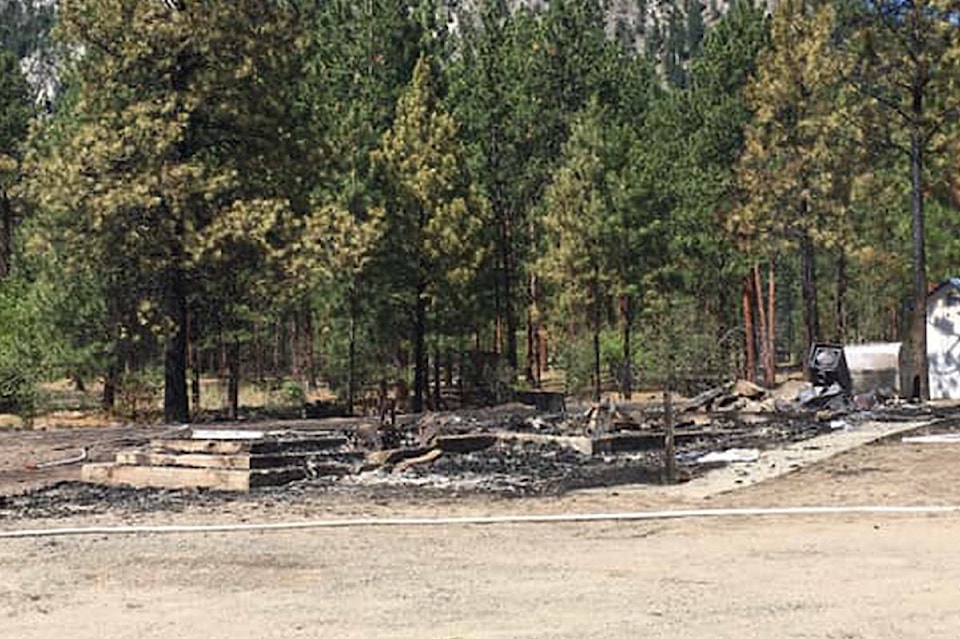Many Canadians were rocked by the discovery of thousands of Indigenous children found buried on the grounds of residential schools, starting with the remains of 215 children found on the site of the former Kamloops residential school.
For members of the Indigenous community, the discoveries didn’t come as a surprise, though they still were shocked all the same.
“We all knew, we always knew that something happened when their loved ones didn’t come back,” said Lower Similkameen Indian Band Chief Keith Crow. “It’s not closure, it’s bringing it all back, it brings back a lot of emotions, a lot of trauma, and mental health is a big concern right now.”
The children who attended the Kamloops residential school included children from families of bands across the Okanagan and Similkameen. Others were taken to the Cranbrook residential school. The discovery of the burials at the Kamloops residential school site were only the first of many last year.
It’s a fresh reminder of Canada’s racist past, one that is still being grappled with and that impacts communities today. With the last residential school in the country closing only in 1996, a short 25-years ago, the intergenerational trauma is all too recent with many Indigenous families having parents who attended a residential school, let alone grandparents and great grandparents.
“You have to look at the trauma that’s happened and where our people are at and why they’re where they’re at. We have survivors of residential schools… the trauma that they saw, that they received, it’s why they’re where they’re at today,” said Crow. “Hopefully our future generations won’t forget, and they won’t have to go through it.”
The frustrations and the hurt from that trauma boiled over in dramatic fashion when churches on the land of the LSIB, Penticton Indian Band, Osoyoos Indian Band and Upper Similkameen Indian Band were burned to the ground. On June 21, the Sacred Hearts church on PIB land burned to the ground at 1:30 a.m.
Less than two hours later, the church on Osoyoos Indian Band land in Oliver burned to its foundation.
Five days later, on June 26, the Lady of Lourdes Chopaka Church was set on fire at around 3 a.m., roughly the same time as the St. Anne’s Church at Chuchuwayha outside of Hedley burned.
For many Indigenous band members, the burnings only served to worsen the pain as they lost not only a place where they had found a measure of solace, but also pieces of their history and heritage. The burning of the Chopaka church also destroyed historical and cultural documents that were stored there.
Even now, months on, the relationship between the church as both a concept and as an institution and the Indigenous communities, and with Indigenous individuals in the communities, is still one that is under strain and changing.
“We’re in a dilemma right now in our community, because we’ve posed the question to our community on whether we rebuild it,” said Crow. “Some people voiced the opinion that they don’t want to see it rebuilt, others said they do want to see it rebuilt, and others are saying let’s have an open general area for any religion. There’s lots of ideas, but it’s still there, we’re still having that conversation.”
Action by those in power and responsible for residential schools have not been well-received by all either, with the Pope set to meet with a limited number of Indigenous representatives in 2022 and the federal government’s first Truth and Reconciliation Day in 2021 meeting with confusion from many — even the Prime Minister it seemed didn’t know how to properly treat the day and decided to vacation in Tofino with his family instead.
“The last thing some of our members said to me was ‘Why are we sending a delegation to the Vatican? We don’t need empty promises,” said Crow. “Even with the Pope coming to B.C., it’s not going to do anything. It’s a start, but more needs to happen.”
The legacy of the residential school system is one that is not soon to fade, as further investigations continue in Canada. An announcement on the research done into the site of the William’s Lake residential school is expected shortly into the new year, after it was delayed. Members of the LSIB had been taken to the school there as well as Cranbrook and Kamloops.
As the research into the former schools continue, there will be more discoveries of the children who didn’t return home, but Chief Crow hopes that once the truth is fully revealed, that the communities can begin to heal.
“Healing has to start somewhere. It’s going to create a lot of hurt; there’s a lot intergenerational trauma, and it’s just another stepping stone that had to happen. The discoveries were coming, it wasn’t a surprise to us, ” said Crow. “For our survivors who are still around and able to tell their stories, hopefully this will help them share their stories to know they’re not alone, and we’re here to help them out the best we can.”
READ MORE: Penticton band chief condemns suspicious burning of 2 Catholic churches
